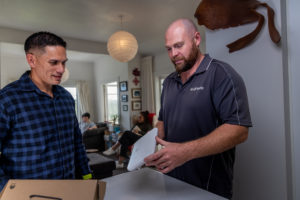5G is a term you will have heard a lot. The big telco companies are keen to talk about it, so they have a point of difference, and the technology creators love to talk about how the high speed and low latency will enable things such as self-driving cars. However, for those of us living in rural New Zealand, there is no sign of 5G, so in this blog, we will look at just why that is.
What is 5G?
First there was 3G, then 4G, and now 5G is the next big thing. Each of these services uses a different frequency, and each is faster than its predecessor, but a key difference with 5G is its low latency.
Latency is the time a packet of data takes to go from one point to another. The lower the number, the more real-time the experience is. Latency is super important when we think of tech that needs to make real-time decisions. A good example would be a self-driving car that has to quickly decide what to do when suddenly confronted with an obstacle in its path. In that scenario, any delay in receiving data back from a controlling network could prove costly or even fatal.
Why hasn’t 5G reached your house?
If you live in a rural area, 5G will likely never reach you. It’s not great news, I know, but it’s true.
5G towers send a signal to 5G capable mobile devices, but that signal can not travel very far before losing its strength. In fact, 5G towers can only provide coverage to an area of approximately 500m. Because of this, you can see that large numbers of towers need to be deployed to ensure coverage across a suburb, let alone a city. This represents a high cost that can only be justified in areas of high population density.
So this is why rural NZ misses out on 5G. The economics don’t stack up. The number of towers required to provide end-to-end coverage in rural areas can’t be justified against the potential return from a small and widely distributed population.
Not to worry, fixed wireless has you covered
Fixed wireless connections operate by sending signals from a dish on a high site (or tower) on a nearby hill to a dish on the roof of your house. The frequency used is different to that of 5G meaning that it can travel up to 20km, but it needs a clear line of sight between your dish and high site for the service to operate.
And here’s the pitch – this is the technology we use at Lightwire.


